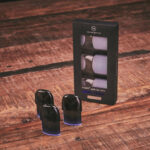Health Canada, which is responsible for Canada’s federal health policy, has proposed lowering the national limit on e-juice nicotine strength for all vape juices sold locally. The proposal would take the limit from 66mg/ml down to 20mg/ml, marking a dramatic reduction that some Canadian vapers are sure to notice.
Currently, there are e-cigarettes sold by major brands in the country that range as high as 59mg/ml, which is very high by virtually all standards. In comparison, the European Union (EU) limits the nicotine strength of e-liquids to 20mg/ml, which is what Health Canada is aiming for in the latest proposal.
Will Shortfills Become Popular In Canada?
In the United Kingdom and elsewhere, bottles of e-liquid known as “shortfills” are quite popular with the vaping community as they provide a practical means by which to alter nicotine concentrations to surpass the locally allowed limit. A shortfill bottle of vape juice is filled short, leaving enough room in the bottle for a nicotine shot to be added. When combined with a nic shot, shortfills can be quickly adjusted to achieve higher nicotine concentrations. And adding a nic shot is easy as all vapers have to do is open the shortfill bottle, add the nic shot, and give it a shake to mix the ingredients together before vaping.
If Canada does move forward with lowering the vape juice nicotine limit, shortfills may suddenly spike in popularity with Canadian vapers in search of higher nicotine concentrations. Then again, the government may crack down on shortfills as well.
Canadians Have 75-Days To Voice Their Opinions
Health Canada is seeking feedback from Canadians on their proposal to lower the national limit on e-liquid nicotine strength, providing the public with 75 days to send their thoughts on the matter to the government.
The Vaping Industry Trade Association (VITA) issued a release in which executive director Allan Rewak stated that the proposed 20mg/ml limit “is simply too low for many smokers,” which may well be the case as heavy smokers may require higher concentrations of nicotine in their e-liquid to successfully transition from smoking tobacco to e-cigarettes.
VITA noted in their release that vaping’s effectiveness as a harm reduction tool for smokers would be at risk as smokers require access to vaping products that contain an adequate amount of nicotine.
The window for public consultation is currently open but ends on March 4, 2021.
Canadians who want their voices heard should move fast to ensure that the government listens.
Health Canada Is Considering Additional Regulations
While the proposal aims to lower the e-liquid nicotine limit, Health Canada is also considering additional regulations on vaping products, such as restricting flavors and requiring the vaping industry to provide more information regarding their products. Additional information would pertain to their sales, the ingredients that they use, and their research and development.
Nova Scotia Already Has A Lower Nicotine Cap For E-Liquid
In some parts of Canada, such as Nova Scotia, the maximum nicotine level of vaping products has already been lowered to 20mg/ml. If Health Canada’s proposal goes through, the national limit would match that of Nova Scotia.
British Columbia previously announced that it would adopt a regulation limit nicotine levels in vaping products to 20mg/ml and Quebec has indicated that it is considering doing the same.
As it stands, it appears there is a good chance that the legal limit on nicotine levels in vaping products will be 20mg/ml before the end of the year.







